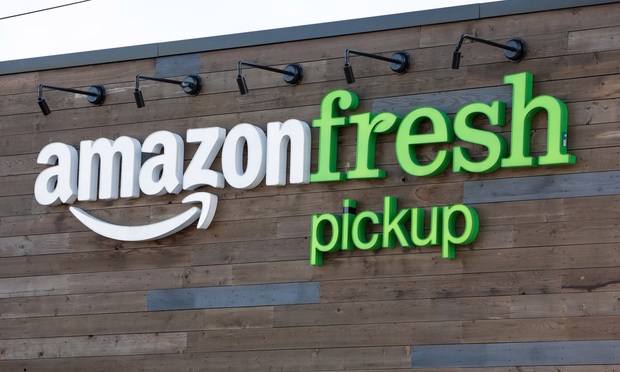SEATTLE—A new report by Morningstar finds that Amazon's online grocery efforts reached a tipping point in December 2019, positioning the online retail giant for significant growth this year. Namely, in December Amazon did away with Amazon Fresh's $15 monthly service fee and introduced one- and two-hour delivery window options for Prime members. "In our view, this decision removed two of the key barriers preventing Prime members from fully embracing online grocery—cost and convenience—and has triggered widespread interest in markets where the service is offered," according to report author R.J. Hottovy.
"Several years from now, we believe the removal of Amazon Fresh fees and more convenient delivery windows may go down as the catalyst that prompted widespread consumer adoption across the US," Hottovy writes.
Certainly there are other players in this space and over the course of 2019 many introduced more conveniences for users that have helped spur growth. But Amazon is the market leader in US online grocery sales, with 2018 sales of $8.2 billion—almost three times the $2.8 billion generated by number-two player Walmart, according to third-party e-commerce data provider and consultant Edge by Ascential.
Morningstar forecasts that online grocery and other online food sales will accelerate over 2020-24, averaging almost 20% growth annually.
What Will This Look Like
Amazon Fresh will just be one part of Amazon overall expansion of its online grocery operations, Morningstar says: It expects Whole Foods and other physical stores to play a part in the company's growth plans in the years to come. "Our targets for Amazon's physical stores include mid- to high-single-digit top-line growth the next five years (based on mid-single-digit physical store square footage growth and low-single-digit comparable-store sales growth for Whole Foods and Amazon Grocery, and 50% average annual square footage growth from Amazon's other retail formats including Amazon Go)," according to the report.
Grocery Stores are Shrinking
These changes will come into play even as grocery stores in general are in a state of flux, due to changing consumer preferences, automation and delivery demand, according to a report last year by CBRE.
It predicts that online grocery share will reach between 5% and 10% by 2022, fundamentally altering the typical store.
In large-format locations, grocers will have to dedicate space for click-and-collect counters and curbside pick-up, which will be an especially popular purchasing option in suburban and rural locations. More traditional grocery store formats and specialty players, especially in urban and more densely populated areas, will shift store space toward distribution uses and focus customer-facing space on higher-margin products and experiences, CBRE said.
The Omnichannel Experience
CCIM, as well, predicts growth in the online grocery sales, estimating that they will make up 20% of the total grocery retail sales—some $100 billion—by 2025, with grocery stores shrinking to a third or half their current size with a more limited, locally curated inventory.
A store's average sales area has contracted by 15% since 2010, CCIM reports. Looking ahead, the grocery stores of the future will be a third to a half the size they are today, it said.
Additionally, physical stores and e-commerce will become an increasingly connected omnichannel experience, and the role of the store itself will become more experiential, CCIM says.
"One future model attaches a 'dark store' to a smaller footprint store with 5,000 items (a typical grocery store currently has 45,000 items) from which basic commodity products will be picked and staged for pickup or delivery. This model is along the lines of what Kroger is experimenting with its partnership with Walgreens in its online fulfillment model."
© Touchpoint Markets, All Rights Reserved. Request academic re-use from www.copyright.com. All other uses, submit a request to [email protected]. For more inforrmation visit Asset & Logo Licensing.








